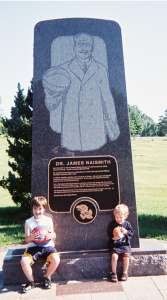by John Schmalzbauer, Missouri State University
Conservatives have long extolled the virtues of the American working class. In an oft-repeated statement, William F. Buckley said he would rather “entrust the government of the United States to the first 400 people listed in the Boston telephone directory than to the faculty of Harvard University.” The author of God and Man at Yale, Buckley saw higher education as a threat to religious faith. Forced to choose between Harvard Yard and South Boston, he chose Southie.
Had Buckley lived long enough to read Charles Murray’s Coming Apart: The State of White America, 1960-2010, he might have reconsidered his choice. More than any other conservative tome, it challenges the myth of proletarian piety. Chronicling the decline of marriage, work, and church attendance among blue collar whites, it presents an American working class that looks more like Jay and Silent Bob than Ralph Kramden (Jay and Silent Bob are recurring characters in the films of director Kevin Smith, including a 1994 feature set in a New Jersey convenience store. Despite Buckley’s support for drug legalization, it’s hard to imagine him patronizing the Quick Stop).
Throughout the book, Murray compares fictional lower class neighborhoods (what he calls “Fishtown”) with their upper class counterparts (“Belmont” in Murray’s lexicon) using real datasets (including the General Social Survey). Tracking “disengagement from religion,” he finds that “the drift from religiosity was far greater in Fishtown than in Belmont.”
Murray is not the first to report such news. Recent studies of religion and higher education have found that college-educated Americans are less likely to drop out of church. In a 2007 article for Social Forces, Patheos Blogger Mark Regnerus and his colleagues reported that “emerging adults that avoid college exhibit the most extensive patterns of religious decline, undermining conventional wisdom about the secularizing effect of higher education.”
Other Patheos contributors have commented on the secularization of the American working class. In a review of Murray’s book, historian Thomas Kidd notes that blue collar Americans are “not clinging to religion.” Along the same lines, Black, White, & Gray blogger Jerry Park sees “a growing drift away from the institutions of marriage and religion.”
Life is different on campus. Challenging the stereotype of the secular university, many college students cling to their study Bibles and iPhone religion apps.
At William F. Buckley’s alma mater, a $70 million Catholic campus center sponsors a full program of liturgies, lectures, and social events. Comprising 28 percent of the student body, Catholics are now the largest single religious group at Yale.
Across the United States, evangelical parachurch groups have enjoyed steady growth. According to sociologist Michael Lindsay, about one-tenth of the Princeton student body belongs to an evangelical campus ministry. Nationally, the number of students involved in Campus Crusade has tripled, rising from 20,000 in 1995-1996 to 63,000 in 2008-09. According to a recent survey, one-fifth of college students identify as born again Christians.
In an era when the first 400 names in the Ohio State University phone book are more religious than the residents of Murray’s Fishtown, what is to be done?
For starters, religious leaders should focus more on the plight of the American working class. From Murray’s perspective, this means analyzing changing lifestyles. Though this is a valuable exercise, they should not stop there.
Those who take the time to read Coming Apart should also pick up William Julius Wilson’s When Work Disappears (1996), a study of the “new urban poor.” While Murray places the blame squarely on changing mores, Wilson traces the shifts in inner city family life to the loss of working class jobs and the disintegration of neighborhood social organization. In a review of Coming Apart, economist Paul Krugman echoes Wilson’s argument, noting a precipitous drop in the wages of male high school graduates after 1973. In the absence of good jobs, blue collar men have been less likely to marry. Other sociologists have pursued a similar line of inquiry, exploring the cultural side of poverty without blaming the victim.
Last but not least, church officials should make an effort to understand the religious struggles of the white working class. This is especially important for American Catholics. In Boston (Buckley’s holy city), only one out of five Catholics goes to church.
In the judgment of Fordham University’s James T. Fisher, the characters in Kevin Smith’s movies are part of a “Catholic lost generation” that bears the wounds of the church’s past (including the recent sex abuse crisis). Currently immersed in a project that explores “historic Catholic violence—especially in families,” Fisher is acutely aware of the struggles of fallen away Catholics. If the church wants them back, it will have to spend some time down at the Quick Stop.














